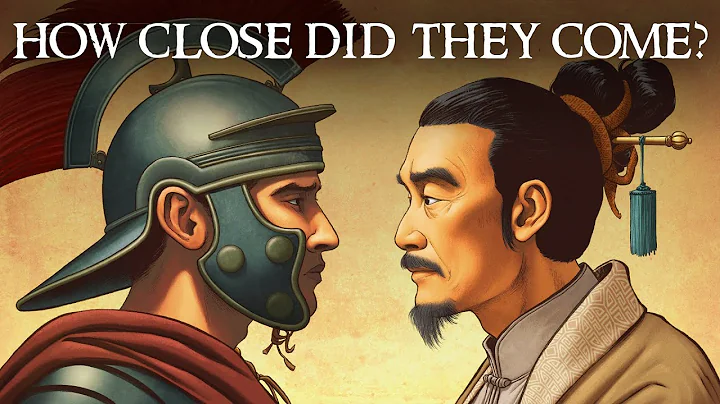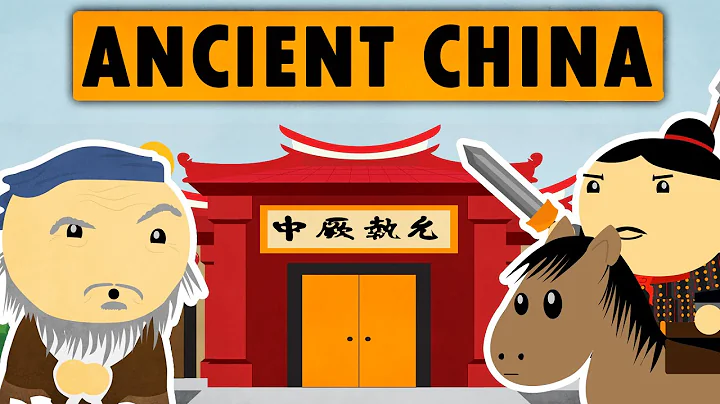In ancient historical dramas, you can often see such a scene. The generals shouted "siege", and thousands of troops fought one after another. After breaking through the city, one city was ruled by another.
Many people are most impressed by the shape of ancient Chinese cities. It may be "square", so why is this? How to choose the site of the ancient city? What defensive buildings are there? Today we will talk about ancient cities.

The shape of the ancient city
In the ancient city of our country, more than 70% of the city is square. The first is that the square is the easiest to build. The area within the city wall is more regular, which also facilitates the division of land within the city. The measurement technology and engineering technology required during construction are the lowest.
Daxing City in the Sui Dynasty, also known as Chang'an in the Tang Dynasty, was almost a regular rectangle, but it took only 9 months to build such a magnificent city; Luoyang was built later and it took only 10 months to build. The rapid construction of these two large-scale capitals should be inseparable from the simplest square shape.

In ancient China, square or nearly square capitals were used, as well as Cao Wei Ye City, Northern Wei Dynasty Luoyang, Eastern Wei Dynasty Bei Qi Ye City, Northern Song Dynasty Kaifeng, Yuan Dadu, etc. They were either completely Newly built, or planned on the basis of the original city. In addition, most of the newly built local cities in each dynasty, the frontier fortress castles in the Han Dynasty, the guards in the Ming Dynasty, and the Mancheng in the Qing Dynasty are mostly square.
Many cities are in development, due to various reasons "deformation", there are also many irregular shapes due to terrain reasons and local conditions. Generally speaking, the shapes of ancient Chinese cities are diverse, but most of them are square.
Ancient City Site Selection
China’s Feng Shui thought has been developed over thousands of years, emphasizing the Feng Shui theory of "the unity of man and nature" and "gathering energy", and the location of the capitals of the past dynasties The construction of the palace has a profound impact.
The location of the ancient city was largely due to military considerations. The ancient ruling class had a decisive factor in the location and layout of the entire city. In order to be able to rule for a long time, the location of the capital city will choose more important military strategic areas.

The site selection of the ancient city reflects the city’s site selection and planning ideas based on local conditions. In ancient times, when the city was built, water from a big river was introduced into the city, which solved the water problem of the entire city to a certain extent.
The regionalization, primary and secondary layout of the overall functional layout of the city, the rigorous layout of horizontal and vertical streets, and the requirements for the setting of the central axis, all clearly show the superiority and inferiority, primary and secondary thinking of Confucianism.
The largest city in Chinese history
Chang'an is Xi'an where it is the political, economic and cultural center. During the golden periods of Zhou, Qin, Han, Sui, and Tang, the capitals were all in Chang'an.

If the size of the city is defined by area, Chang'an City has 87.27 square kilometers in the Tang Dynasty. If the size of the city is divided by population, there were 1.85 million people in Chang'an during the Tang Dynasty. When I was a teenager, I saw Chang'an flowers all at once!
Those defensive buildings in ancient cities
In the history of our country, the walls of the city were all made of soil. After the Ming Dynasty, the country became strong and the brick city appeared, which is also made of bricks. Cities and walls. The brick wall is very strong, greatly improving the defense ability of the city. The ancients had a systematic plan for the structure of the city wall, the setting of the city gate, and the construction of the Wengcheng.
City gates and towers are indispensable for every city. For the safety of the city and the safety of people entering and exiting, a city gate must be established after the city is completed. With a city gate, there will naturally be a city tower, a city in the southeast, northwest and northwest The city walls will have gates, and on some sides, several gates will be set up, and a tower will be built on each gate.

After the ancients built the city, they usually built an urn on every city gate on the four sides. 瓮城 is equivalent to a small city. Before entering the city gate, people have to pass through this city. The main purpose of the establishment of the city is to protect the city gate.
Wengcheng’s defensive ability is very strong. Its design can be said to be a valuable asset in the history of Chinese cities and a unique system of China. Whether it is defense or offense, it plays an important role in the city.
If the enemy wants to attack the city wall, they usually need to enter the city first, trap themselves in a confined space surrounded by high walls, and be attacked by soldiers on the city wall in all directions. In this case, find a way It is very difficult to break through the gates.

Most cities will have turrets. The setting of turrets is mainly determined by the location of the city, the surrounding environment, defense methods and strategic requirements.
The turret is built on the corner of the city wall. It is a square or round platform, mainly to observe the movement in all directions, in order to defend and protect the stability of the city and the imperial city.
The hard building is a square platform or a hexagonal platform, which is generally built in the city wall and protrudes outward. The Tuanlou is a circular platform, like the hard building, it is also built on the city wall, only at the corner.
There are many enemy buildings in the city pool, which are used by the city guards of various sections to carry out command and observation orders, place equipment and materials, etc., and usually provide shelter from the wind and rain for the guard patrol.
Enemy buildings are generally divided into two types, one is on the city wall without protruding towers, and the other is built separately at the northwest corner of the city.

The female wall refers to the protective low wall above the city wall, which is flat on the inside of the city wall and is called a cosmic wall. The outside of the city wall is concave and convex, called a wall stack.
The female wall is a substantial protection for the soldiers above the city wall, reducing the probability of them being attacked by the enemy under the city and preventing them from falling from the high wall. It is one of the most basic buildings of the Chinese city wall.
On the ancient battlefield, every battle basically revolves around the city, and keeps attacking the city, so as to ensure that our troops have sufficient combat effectiveness.
Ancient cities are a comprehensive product of politics, economy, culture, science and technology in different historical periods, and they are worthy of our study.
古建家园--Gujian China sorts out the chaos in the existing construction industry and the lack and discontinuity of culture, and creates an architectural cultural entity space that integrates multiple functions and needs to the greatest extent. Strongly connect upstream and downstream enterprises and professional academics in the construction, cultural and creative, and cultural industries, and link relevant ministries and commissions, industry associations, colleges and universities, and scientific research institutions to jointly inherit architectural culture.
Original content related to ancient construction and construction industry, welcome everyone to contribute (private message).





















